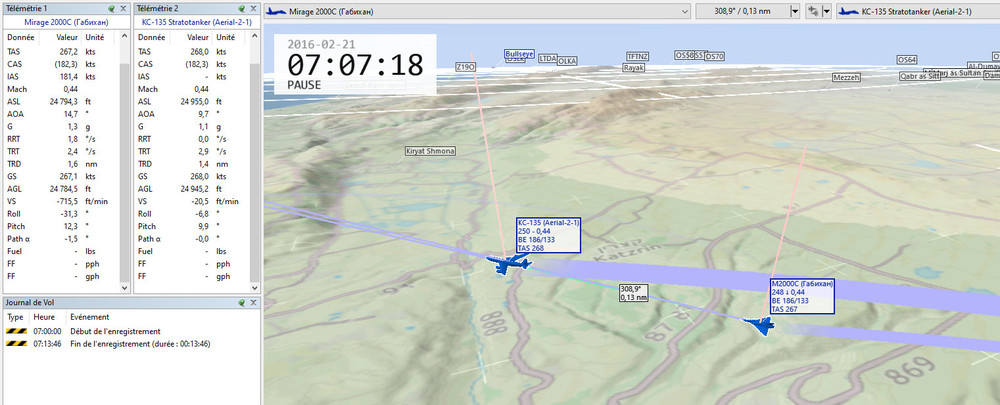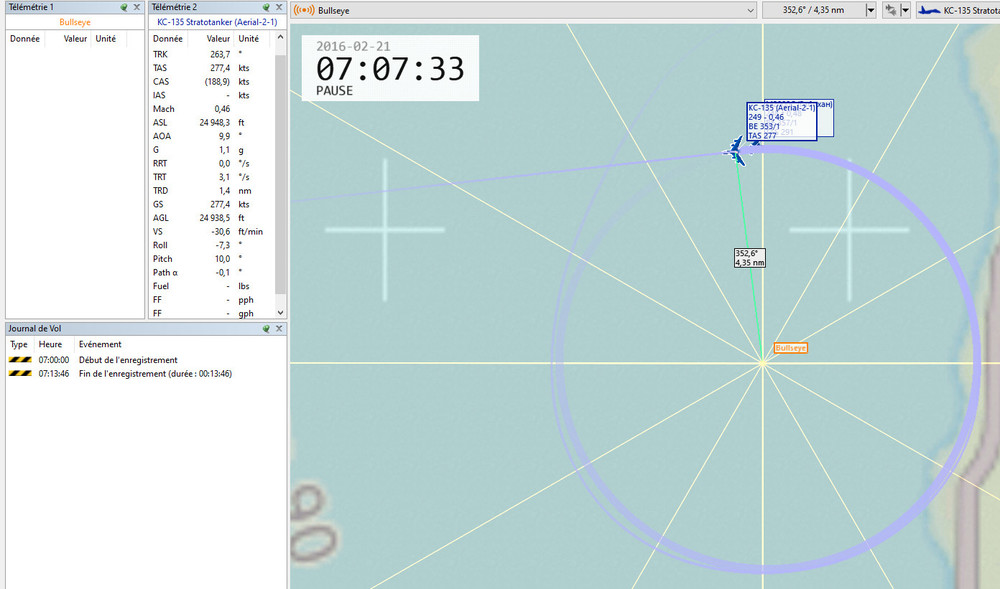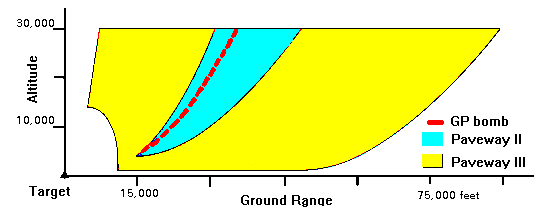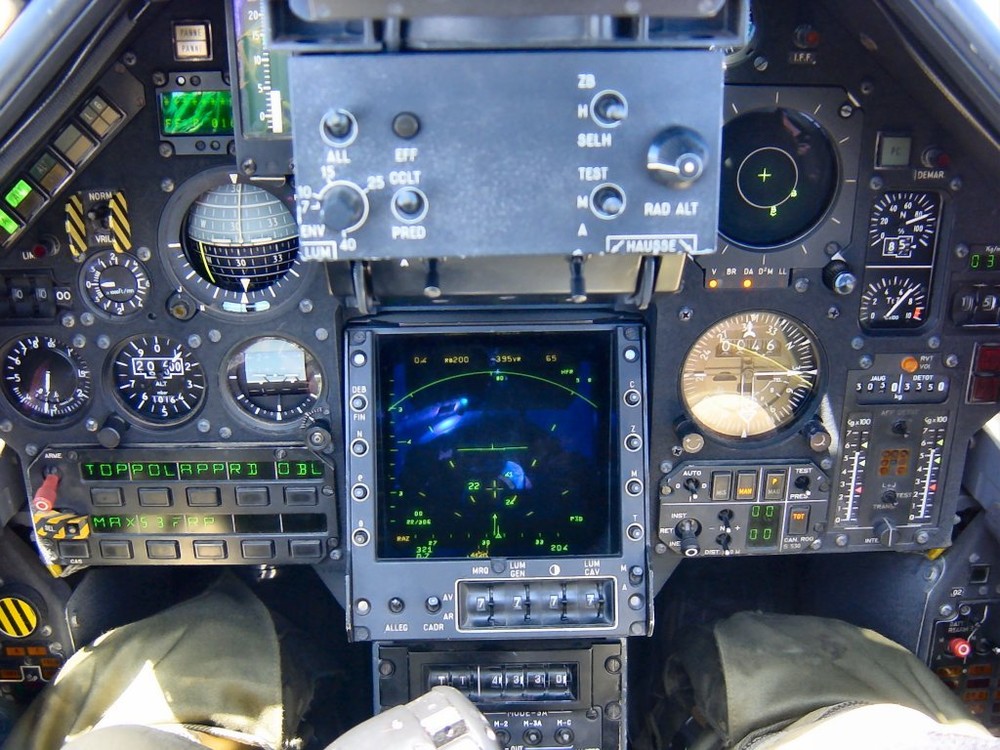

El Chapo
Members-
Posts
175 -
Joined
-
Last visited
Content Type
Profiles
Forums
Events
Everything posted by El Chapo
-
This is the limit of the flight model. A M2000 can obviously sustain a FL400+ with external tanks and no afterburner... RTB FL495 is fairly usual on a high low high profile. But that's true that the margin is sometimes tiny.
-
Interesting topic here... I believe that, as its name implies, speed sensation is a... sensation. You have all experienced before what happens when you drive at 50 km/h, then 130, than back to 50. Speed seems much lower when you return to 50 km/h than it was initially. It is a well known danger for young drivers. Same exists for airplanes. When you make a high/low profile, coming from 10000ft/450 kt to 500ft/450kt will give you a great impression of speed. Then go to 250ft/540kt for a while... And back to 500ft/450kt... You will feel like you're flying sooo slowly now. Speed feeling is at its best when you are close to the sea/ground and to the clouds. As a former high performance aircraft pilot flying DCS in VR, I will not complain about a lack of speed sensation. On the contrary. The other day I flew back to the boat at 50ft/540kt, it was much like in the real thing: a thrilling and enjoyable experience!
-

Status request for flight and wingmen : fuel, weapons
El Chapo replied to Falken2's topic in DCS Core Wish List
Yep and a wingy with a softer hand on throttle would be nice as well... Mine are frequently ejecting while I'm still far away from my real bingo! -
And don't forget this is an 80's computer inside, with a low refresh rate (we don't talk about MHz or GHz...). A stable horizontal flight gives you a precise bombing solution, while a dive bombing gives you lot of errors. As mentioned, this is a question that has already been discussed with Razbam, please read former topics about high drag bombs for M2000. Jojo is definitely right, please consider that his video is the way to go.
-
Hello, While doing some AAR tests today I noticed that tanker's AOB was very low compared to mine. KC-135 was in a continuous 7° AOB turn, and while stabilized behind it I had to keep a constant 30° AOB to stay in position. This is not normal, since with same flight parameters and same trajectory, we should have the same AOB whatever the airframe... Weirdly the math () give me an Alpha angle expected at around 15°, something in between the 2 airframes... Has anyone noticed it already? And if so, where is the glitch? Thanks!
-
- 1
-

-
Oh yeah and I'd like the tanker to tell me on which side he's expecting me. The other day I was alone on tanker, and came on right side, tried to enter the basket for 5 minutes, until I eventually understood I was expected on the other side. So a "cleared pre contact left" or "right" would be nice
-
IRL you don't hear any sound in the cockpit when you touch the basket. But adding realism would be adding (more) turbulences, or random fuel leakage from the basket! Or it could be the option to request a given amount of fuel to the tanker (pls give me 4k) or a top off... Or the option to ask for a given fuel flow depending on your aircraft... Or the BDA (boom drogue adapter) (which gives you additional challenge: smaller basket, different position, etc...) Ex: Fuel leakage from the outside Fuel leakage from the inside BDA refueling:
-
True but our aircraft allow us to play cold War style missions when anti runway was still relevant, old style (overfly).
-
Truth is that indeed IRL when you enter the basket there is a slight speed drop for the receiver. If you have 1 or 2 kt closure speed it will disappear without doing anything. It is more certainly due to the fact that you have to push the hose which is hydraulically driven in order to absord the contact shock. On the contrary, on a centerline boom drogue adapter you have to reduce power to stop moving forward. So yes this type of effect would be realistic.
- 7 replies
-
- m-2000
- aerial refuelig
-
(and 1 more)
Tagged with:
-
Rotation speed is of course depending on your total weight. In a light configuration (slick) it can be as low as 120kt. With a central tank and full weapons, around 130kt. With 2 tanks, and magics, 145kt is OK. With 2 tanks, magics and 4 Mk82 take 150. Beware, maximum speed for nose wheel is 156kt. Your are close to the limit at maximum take off weight.
-
Hi Would it be possible to make us some anti-runway weapons? Something like the Durandal or BAP-100? It would be nice for runway attacks... Thanks
-
You have to make a difference between "peace time rules" and "real ops". At home (since most conflicts take place abroad nowadays) we strictly stick to local rules and regulations, even if they are not consistent with our training needs. In real operations, you choose the flight parameters that suit best to your given task. Eg: 420 kts for low level is nice, but when going for the real strike (Desert Storm) it was more like 540 kts. We used to say that on "D-day" there would be only one throttle position : full forward (let's say 98% to leave a 2% margin to the wingies). Regarding medium or high altitude, flying below Mach 1 is required peace time to avoid unbearable insurance fees... But once you are in for the fight don't expect anyone to push slower, unless if they are physically unable to (Tornadoes or anyone with big tanks or bombs). You have then 2 options: pushing at the slowest player's speed, or putting the slowest at the rear of the COMAO. Regarding 250kt rule below 10000', this is a general aviation IFR rule. Some countries have specific military rules, where these limitations do not exist. And eventually, some planes will avoid flying too slow to keep the opportunity to make emergency in flight start up. Eg: M2000 will avoid flying below 300kt in medium and high altitude, and below 400kt for this very reason.
-
Geography has no problem. Maybe geopolitics has, but who cares?
-
The thing would be to have a default preset of the 10 first waypoints, without having to enter them in mission editor. For example for a quick start mission, or in flight start.
-
On the other hand, AI has virtually unlimited SA, while player is limited. E.g. AI never looses "tally" in dog fight, and that's a big difference. Therefore SA of the AI must be taken into account to avoid creating an unbeatable beast.
-
Hi, In the real plane, waypoints 1 to 10 and their BAD are stored in the INS, so that you don't have to reload them at every flight, and they are the same for all aircraft for a given squadron so that there is no difference whatever aircraft number you take. Would it be possible to do the same in DCS? We could have a given set of waypoints for 1 to 10 (e.g. : main runways on a theatre). It just implies that waypoints in mission preparation have to be loaded with a +10 offset... It is all the more interesting that manually inserting waypoints is time consuming in the M2000. What do people think about it?
-
Hi Ed! We need a heavy bomber in our flyable plane list.. B1-B, Tu-160, B-52, Tu-95... Make your choice but it would be so great!!!
-
Spotting aircraft is the most difficult thing to do IRL as well. You should know some math to be able to look at the right place in the sky: altitude difference / range gives you a vertical angle, and bearing gives you the horizontal angle. Then you have to know your cockpit to know where is 5°, 10°, etc... up or down, and left or right. Some manuals give you this kind of description of the cockpit. Knowing when you are an easy spot or not is part of your tactics choice as well. If the sky is cloudless, being slightly below the bandit will place him above the horizon, and it will be easier to spot. If the sky is overcast, being much higher will give you an easy spot, like a fly on the milk... Coming with the sun in your back will make you almost invisible, even to IR seekers. Flying with contrails will remove all surprise. Etc... But I quite agree with some comments: planes have become somewhat easy to spot, sometimes far above 10Nm, which is impossible IRL.
-
Hi guys, Very interesting topic. I have to admit I skipped the thread around page 3 or 4 to come to the end. My input, if it has not already been said: - automated AAR is a thing that already exists IRL - it has been developed on various platforms, essentially to prepare UAV's ability to go for AAR. Regarding in game experience : - I have an experience of several hundreds of AARs IRL on high performance aircraft. But until recently , I never managed to stay in the hose to get my fuel in the game. It was one of the most frustrating thing I experienced in that game! I fully understand why some people might want to overcome that undue frustration. Therefore automated or simplified AAR in the game is understandable. - In order to overcome my inability to refuel, I read advices on how to do in game from other people (all were relevant, and stick to reality). I thought about changing my HOTAS for a more modern one (I have an old Cougar from the 20th century). But none of it was necessary. - What made THE difference was going from 2D with my old screen to 3D with VR. I instantly managed to go AAR once in VR, while I never did it once before. Therefore, for those who are still looking for a tip : if you have tried and tried and tried again and spent hours on it, maybe going VR will be your chance as well! And I recommend everyone to spend time for AAR experience in game, it is close from reality : looking for the tanker, working on geometry to join it, having stress due to low fuel, being tensed while refueling, down to your toes, looking at the beautiful view with a light heart from reform position while your buddies are refuelling themselves... All this is included in game, and it is great!!! So thank you ED for such an immersive and realistic game.
-
Nice, thanks! Have you heard of the "left hook" by any chance??
-
Hi, After testing GBU-24 with the F-18, I have the feeling that the release range is quite short, comparable to what a Paveway II bomb would do. By design, Paveway III LGBs are much more efficient than the previous generation, gliding a lot more, and thus giving us the ability to shoot for longer distances. The TOF is therefore quite short as well: a 40'' TOF from 20k feet seems quite normal for a Paveway II, but it's very short for a Paveway III at the same altitude. Could we have someone looking at this? For example, FAS.org gives us an idea of these ranges. Thanks!
-
We already discussed it. It is an IRL user's feedback. Open source pictures attached to support my saying. Other discrepancies below: - Upper line on the repeater is for UHF, while lower is for V/UHF. It is logical, since it reproduces the location of the radio boxes. - The repeater's line is flashing when radio is emitting, to make sure you use the correct frequency when speaking. - A green light is "on" when receiving on an active frequency (cf. pictures attached: the small green line on top of the upper repeater's line means the UHF box is currently receiving). - Before the frequency you have a reminder of the radio mode (same, cf. picture): FF for fixed frequency, HQ for have quick mode (other modes exist but they are not even implemented on the plane, therefore never in use). On that M2000C cockpit picture you can see that V/UHF box is on preset frequency 016 (FF P 016). If you were on 123.450 MHz it would be written FF 123.45 (6th digit is implied, step between frequencies is 0.025 MHz so 123.47 is for 123.475 MHz). And as you can see on the upper line, the repeater is a 8 digit screen per line (you can see 8 *, because the box is off or in self-test). There would be plenty more details that could be developped regarding the radio, but fixing these few points would bring a great added-value to the radio, since I find them quite far from the real plane's ones, and thus sometimes difficult to use. Thanks
-
Hello, It would be nice to improve radios use by correcting these items: - repeater : they repeat the preset channel when on preset, or the full frequency if manually entered. Therefore you can only have presets displayed on red box. - CLR button: first push clears last digit entered. Second push clears all the field. - There is a bug if you enter a 6th digit on manual frequency. Nothing should happen until you push VLD. - XFR button should send you back to the previous validated frequency. E.g. if you enter 123.450 then VLD then 10 then VLD then XFR, you come back to 123.450. Thanks
-
OK true for firing radars but false for EW and tracking radars. The philosophy of self-protection is "avoid getting shot" trough 3 stages: 1 - being unseen (by being too far or too low - > Intel and appropriate routing) 2 - if seen, not being shot at (by staying out of missile range, or defeating tracking radar, eg: beam - > Intel and RWR) 3 - if shot at, not being hit (by evading the firing radar or the missile itself - > manoeuvre and jamming and decoying) Reaching step 3 means that you are fighting for your survival. You jettisoned your bombs and tanks. Mission is a (at least partial) failure. Therefore you should consider that you are not protected against old generation SAM systems that use EW and tracking radars that are out of RWR or jammer's band, since you might take a shot out of the blue and never be able to react against it. For some systems, even firing radar is out of band. Anyways it doesn't answer the "why" of the technical difficulties regarding DCS and its coding possibilities, but it still gives you a good look at why it is quite in accordance with actual plane performances.
-
Hint: compare SAM frequency band and SERVAL frequency band, and you'll understand why some systems might be "missing".







